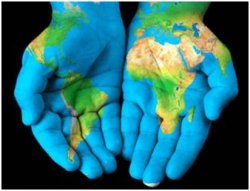Environmental Justice Issues
Environmental injustice, including the proliferation of climate change, has a disproportionate impact on communities of color and low income communities in the United States and around the world. The NAACP Environmental and Climate Justice Program was created to support community leadership in addressing this human and civil rights issue.
In the past, and to some extent still now, when people think of environmentalism, they often think of saving the whales or hugging trees! When folks think about climate change, what often comes to mind are melting ice caps and suffering polar bears. Historically, American society has failed to make the connection in terms of the direct impact of environmental injustices, including climate change, on our own lives, families, and communities, all of whom depend on the physical environment and its bounty.
Race is the number one indicator for the placement of toxic facilities in this country.Toxic facilities, like coal fired power plants and incinerators, emit mercury, arsenic, lead, and other contaminants into the water, food, and lungs of communities. Many of these same facilities also emit carbon dioxide and methane – the #1 and #2 drivers of climate change. At the same time not all are equally impacted. For example, race – even more than class – is the number one indicator for the placement of toxic facilities in this country. And communities of color and low income communities are often the hardest hit by climate change.
Environmental injustice is about people in Detroit, Ohio, Chicago, Memphis, Kansas City, and elsewhere who have died and others who are chronically ill due to exposure to toxins from coal fired power plants and other toxic facilities.
Climate change is about the increase in the severity of storms which means that storms like Sandy and Isaac, which devastated communities from Boston to Biloxi, will become more of the norm. our sisters and brothers in the Bahamas, as well as Inuit communities in Kivalina, Alaska, and communities in Thibodaux, Louisiana and beyond, who will be losing their homes to rising sea levels in the coming few years.
Climate change and other environmental injustices are about US.Climate change and environmental injustice are about sisters and brothers from West Virginia to Tennessee who are breathing toxic ash from blasting for mountain top removal.
Environmental injustice and climate change are about the fact that in many communities it is far easier to find a bag of Cheetos than a carton of strawberries and this only stands to get worse as drought and flooding impact the availability and affordability of nutritious food.
The Environmental and Climate Justice Program works at addressing the many practices that are harming communities nationwide and worldwide and the policies needed to rectify these impacts and advance a society that fosters sustainable, cooperative, regenerative communities that uphold all rights for all people in harmony with the earth.
Learn more about the Environmental and Climate Justice program >




